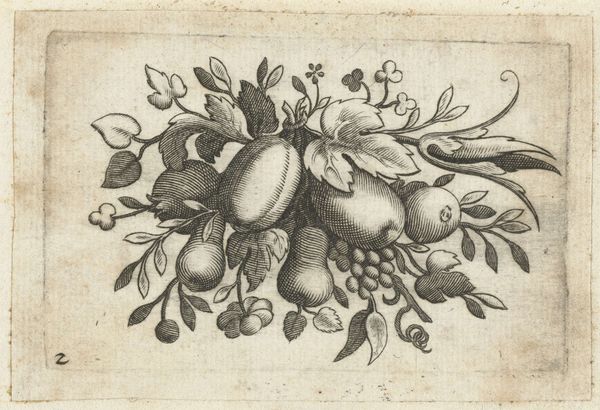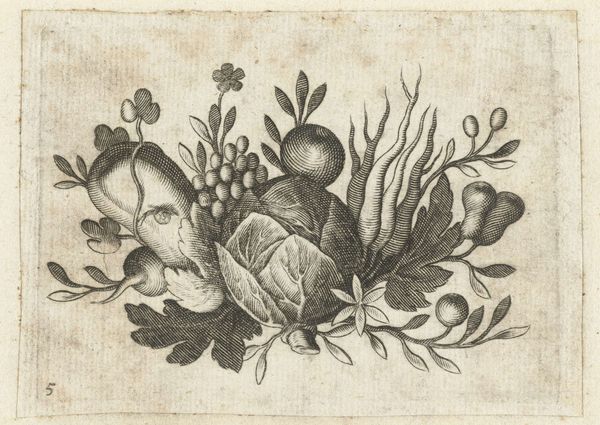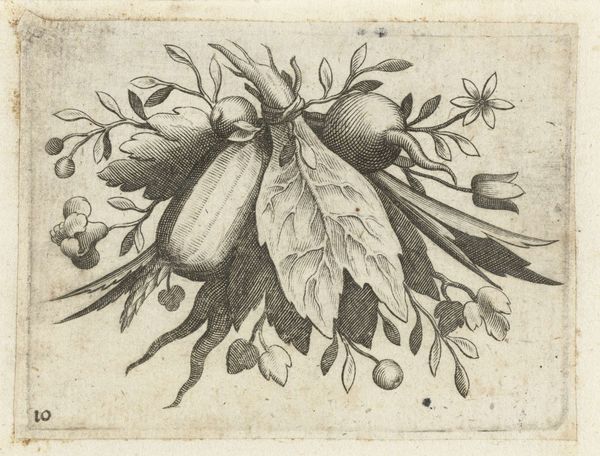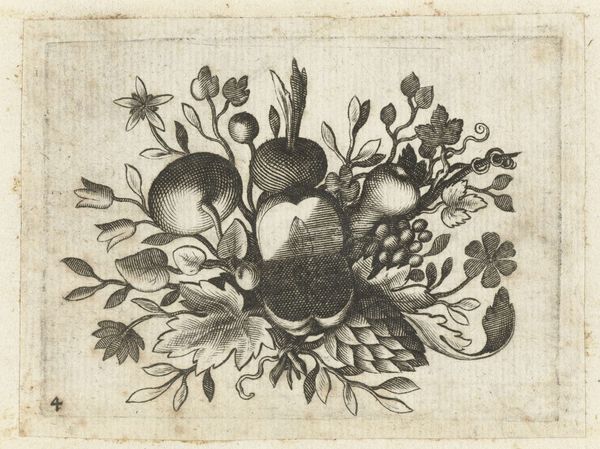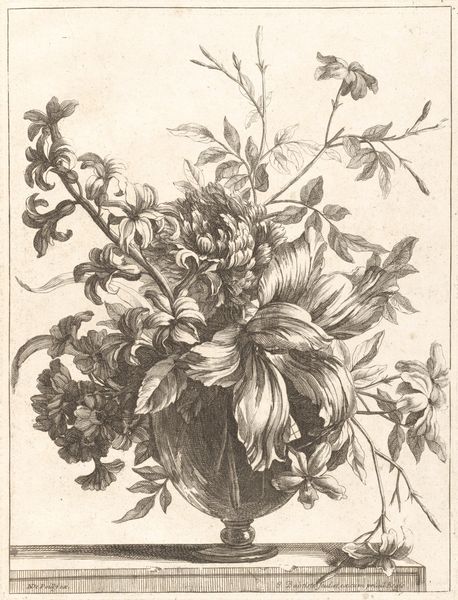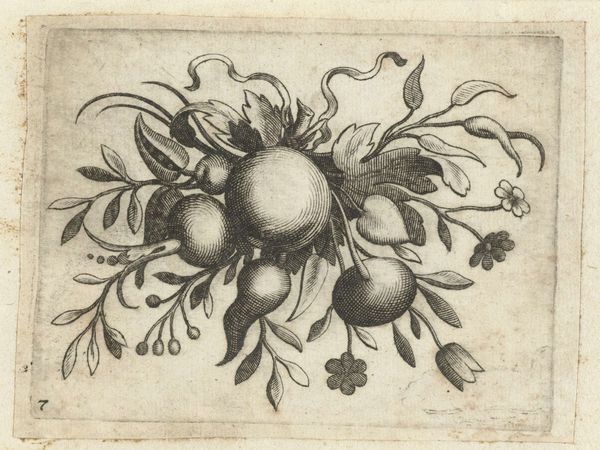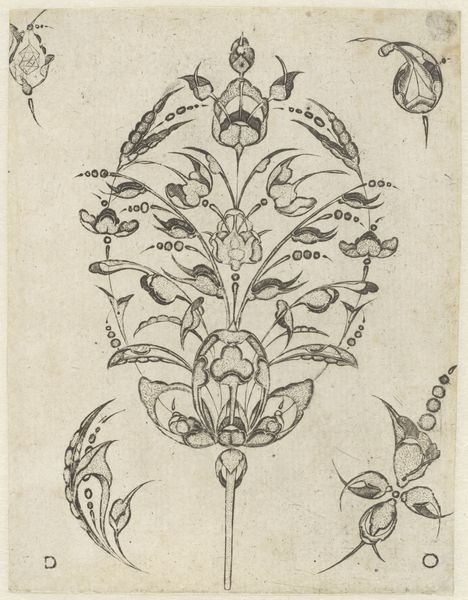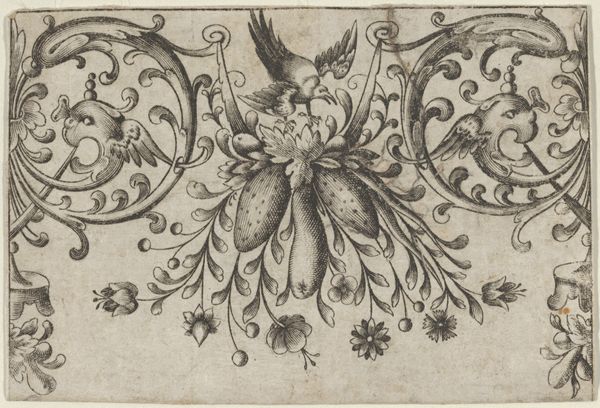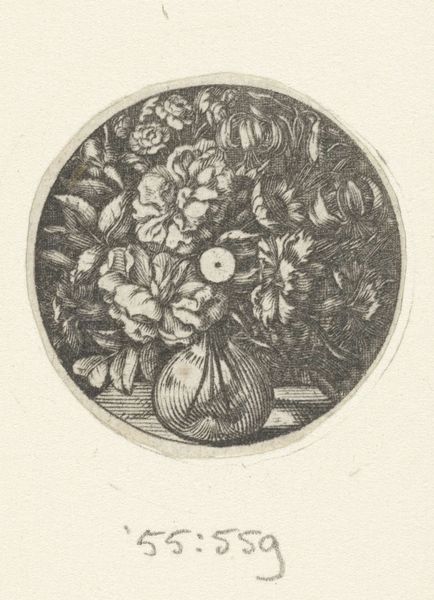
print, engraving
#
baroque
#
pen drawing
# print
#
fruit
#
engraving
Dimensions: height 60 mm, width 91 mm
Copyright: Rijks Museum: Open Domain
Dietrich Krüger created this "Festoen van vruchten," or Garland of Fruits, in the late 16th or early 17th century using etching. Krüger was part of a cultural shift in the decorative arts, reflecting a broader European interest in naturalism and the bounty of the earth. Garlands of fruits and vegetables were not just decorative; they symbolized prosperity, fertility, and the changing seasons. But it's essential to remember that access to such abundance was deeply stratified. Consider the cultural meanings embedded in each piece of fruit, each vegetable, and how those meanings might shift depending on who was consuming and who was cultivating. This festoon is a silent witness to an era of both opulence and inequality. It invites us to consider who had the privilege of enjoying such displays and who toiled to bring them forth. It encourages us to reflect on the complex relationship between art, nature, and society.
Comments
No comments
Be the first to comment and join the conversation on the ultimate creative platform.

